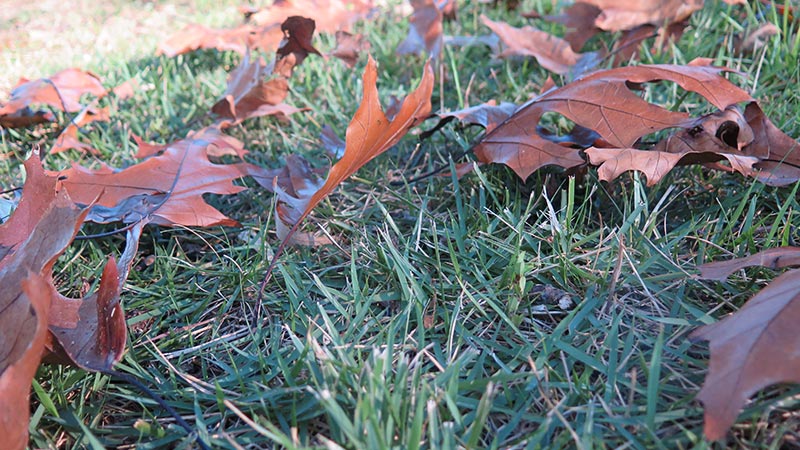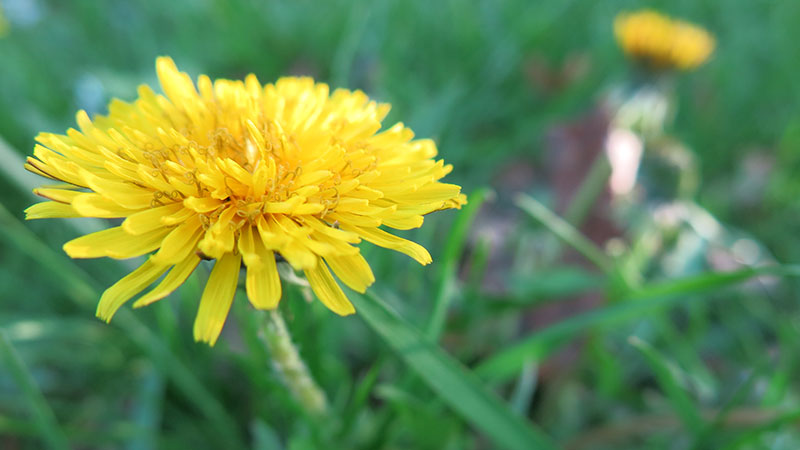Fertilize Your Lawn During Winter?
Help your lawn, a Healthy lawns needs three major nutrients: Nitrogen (N), for dense green top growth, phosphorus (P) for root growth, and potassium (K) for general health.
Cool-season lawns should be fertilized in fall, when temperatures are cooling off but the grass is still growing. Fertilizing in fall, when temperatures are still in the 50s, will help grass plants keep their green color into the winter. More importantly, it will promote healthy root growth, which helps grass get off to a good start in spring. Never fertilize when the soil is frozen as it serves no purpose, and most of the fertilizer will wash away.

Whenever you use fertilizer, follow the directions on the label. More is not better.
After you spread fertilizer, water your lawn lightly to wash the fertilizer off the blades of grass and down onto the soil.

Mowing Your Lawn for Winter – Help Your Lawn!
As the weather becomes cooler, continue to mow your lawn until it stops growing. For both cool- and warm-season lawns, you may be mowing into the late fall. When leaves fall from the trees during this time of year, feel-free to mow over them as they will decompose quickly and add organic matter to the soil. This will also stop them from forming a mat that smothers grass plants.
As you’re getting ready for winter, cutting the grass shorter than usual is normal. However, reducing the height of your mower should not be something reserved for the last mowing. If the lawn has been kept at about 2.5-3.0 inches during the growing season, decrease that to two inches gradually two or three mowings prior to the very last cutting. Be careful to not cut your lawn too short because that can encourage weeds and diseases, causing bare patches.

Weeding Your Lawn in Winter Months
Control weeds in any lawn is to concentrate on taking care of your grass. Healthy grass shades the soil, keeping new weed seeds from germinating. During the growing season, mow your lawn at the appropriate height and water regularly if it doesn’t rain.
Fall is a great time to control dandelions, henbit, creeping Charlie, and other weeds. You can dig them up or spot-treat problem areas with an herbicide. If you use herbicides, be sure to pay attention to specific temperature guidelines. On cool days, when the temperature is 50 degrees or warmer, weeds are actively growing and the herbicide will be more effective.
Aerating Your Lawn in Winter
During the fall, your lawn is preparing for winter, which means it’s enhancing its roots. Aerating will help your lawn increase root growth, allow it to breathe and minimize thatch build up. Minimizing build up is important because thatch makes your lawn susceptible to diseases and insects and reduces its tolerance to drought. Aerating your lawn will help contribute to a fuller and thicker lawn in the spring, giving you more time to enjoy a greener lawn throughout the summer.
Core aerators remove small plugs of soil allowing air, water, and nutrients to penetrate through to the roots. When these are more available to grass plants, your lawn will naturally be greener and healthier. Before you begin to aerate, make sure the soil is moist, but not wet. It’s best to wait until the day after a rain shower or watering your lawn. Once you’ve aerated your lawn, leave the soil plugs on the lawn and let them decompose naturally.
Here is some additional information: http://www.better-lawn-care.com/Lawn-blog.html#axzz6BhjEXWCK
Here is some additional information: https://jdorganiclandscape.com/2020/01/15/great-looking-lawn/
